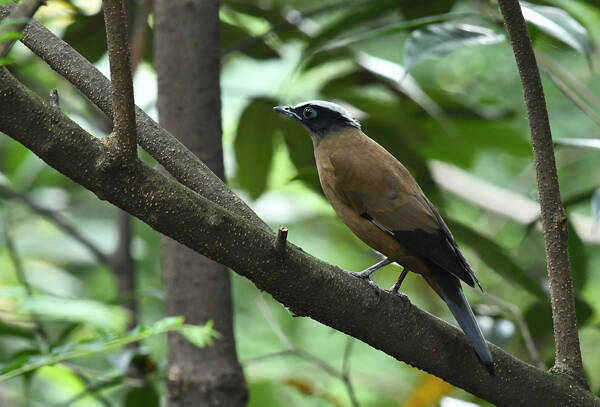Cochoa purpurea
IUCN
LCBasic Information
Scientific classification
- name:Cochoa purpurea
- Scientific Name:Cochoa purpurea,Purple Cochoa,Purple Thrush
- Outline:Songbird
- Family:Passeriformes Thrushidae B.Thrush
Vital signs
- length:24-28cm
- Weight:85-89g
- lifetime:About 10-15 years
Feature
A thrush-like bird
Distribution and Habitat
Distributed in the Indian subcontinent and southwest China, including India, Bangladesh, Bhutan, Sikkim, Nepal, Pakistan, Sri Lanka, Maldives and southeastern Tibet, China. Indochina and southeastern coastal areas of China, including Myanmar, Vietnam, Laos, Cambodia, Thailand and southeastern coastal areas of China.
Hong Kong, Hainan Island, Sichuan (Emei), Guizhou (Weining), Yunnan (Lijiang in the northwest, southwest).
Mainly inhabits humid, evergreen, dense forests or valleys with lush underground plants.
Appearance
The male adult bird of Purple Thrush: The top of the head is lavender-blue slightly stained with gray; the eyes, eyebrow lines, ear feathers and neck are all black; the back is light brown-purple; the bases of the two wing coverts and secondary flight feathers are light. Purple; primary coverts are black; the 1st and 2nd primary flight feathers are black, and the bases of the other primary flight feathers are lavender-grey, forming light spots on the wings; the ends of the secondary flight feathers are black; the tail feathers are lavender-blue. Grey, with black end spots; the lower body is lavender, slightly light brown, and the throat and chest feathers are darker.
The body plumage of the female bird is basically similar to that of the male bird, but the lavender part of the male bird is replaced by light reddish brown; the underparts of the female bird are light earthy brown, which is different from the lavender underparts of the male bird.
The iris is reddish brown; the mouth
Details
Purple Cochoa, also known as Purple Cochoa in English, is a bird of the genus Cochoa in the family Thrush family of the order Passeriformes, with no subspecies.

Purple Broad-billed Thrush is quiet, timid and easily frightened. It moves in pairs or alone. It forages on the ground or among branches. It mainly feeds on insects and insect larvae. It also eats invertebrates such as crustaceans and plant fruits and seeds.
The breeding season of the Purple Broad-billed Thrush is from May to July. It usually nests in mountain forests at an altitude of 1,500 to 2,500 meters. The nest is shallow cup-shaped, with a relatively rough and loose structure, mainly composed of moss and grass roots. The nest is mostly placed on small trees under evergreen broad-leaved forests, 1.5-6 meters above the ground, and sometimes nests are also built under coniferous forests. Each nest lays 2-4 eggs. The eggs are light blue-green with red spots. The size of the eggs is 29-35 mm × 20-23 mm. The male and female parents take turns to incubate the eggs. The chicks mature late, and after hatching, the male and female parents raise the chicks together.
Listed in the 2012 IUCN Red List of Threatened Species Ver3.1 - Least Concern (LC).
Listed in the "National List of Terrestrial Wildlife with Important Economic and Scientific Research Value" issued by the State Forestry Administration of China on August 1, 2000.
Listed in the second level of the "National Key Protected Wildlife List of China".
Protect wild animals and stop eating game.
Maintaining ecological balance is everyone's responsibility!








